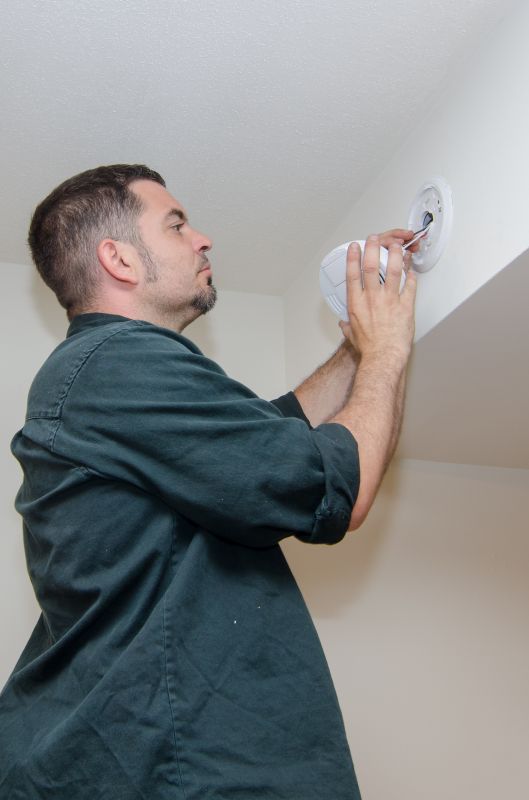Popular Fire Detector Replacement Solutions for Home and Office
Discover trusted options that offer quick installation and dependable performance to keep your space protected.
 Replacing fire detectors is an essential maintenance task that ensures safety and proper functioning of your home or commercial space. Fire detectors come in various types and technologies, each suited to different environments and needs. When considering replacements, it's important to understand the differences between these options to select the most appropriate device for your situation. Proper installation and regular testing are key to maintaining reliable fire detection capabilities.
Replacing fire detectors is an essential maintenance task that ensures safety and proper functioning of your home or commercial space. Fire detectors come in various types and technologies, each suited to different environments and needs. When considering replacements, it's important to understand the differences between these options to select the most appropriate device for your situation. Proper installation and regular testing are key to maintaining reliable fire detection capabilities.
Top Overall Option
Multi-Function Smoke and Carbon Monoxide Detector
This versatile detector combines smoke and carbon monoxide detection in a single unit, offering comprehensive safety coverage. It features easy installation, long-lasting batteries, and user-friendly alerts, making it suitable for various environments. Its interconnected capability allows multiple units to communicate, enhancing overall safety in larger spaces.
Types of Products For Fire Detector Replacements
Photoelectric Smoke Detectors
Utilize light sensors to detect smoke particles, ideal for smoldering fires and minimizing false alarms.
Ionization Smoke Detectors
Use ionizing radiation to detect fast-flaming fires, providing quick response in certain scenarios.
Combination Smoke and Carbon Monoxide Detectors
Integrate smoke and CO detection in one device, offering comprehensive safety monitoring.
Hardwired Detectors
Connected directly to your home's electrical system, often with battery backup for continuous operation.
Wireless Battery-Powered Detectors
Operate on batteries and communicate wirelessly, allowing flexible placement and easy installation.
Smart Detectors
Connect to home networks and mobile apps for remote monitoring and alerts.
Heat Detectors
Sense rapid temperature increases, suitable for areas where smoke detection may cause false alarms.
Fixed Temperature Detectors
Trigger alarms when a preset temperature is exceeded, useful in industrial or kitchen settings.
Aspirating Smoke Detectors
Use a network of pipes and a pump to draw air samples for early smoke detection in sensitive environments.
Voice Alert Detectors
Emit spoken warnings to inform occupants of fire or CO presence, enhancing clarity during emergencies.
Interconnected Detectors
Linked units that activate simultaneously to provide comprehensive alerts across multiple areas.
Combination Detectors with Humidity Sensors
Detect smoke and monitor humidity levels, suitable for environments prone to moisture.
Popular Choices
Popular for their ease of installation and flexibility, these units operate on batteries and communicate wirelessly.
Integrate with smart home systems for remote alerts and monitoring via mobile devices.
Offer dual detection in a single device, reducing the number of units needed for comprehensive coverage.
Provide continuous operation with the reliability of wired power and backup batteries.
Preferred for their sensitivity to smoldering fires and reduced false alarms.
Commonly used for detecting fast-flaming fires, valued for quick response times.
Provide spoken alerts for clearer communication during emergencies.
Chosen for early detection in sensitive or high-risk environments.
Selected for areas where smoke detectors may cause false alarms, such as kitchens.
Popular for providing synchronized alerts across multiple rooms or zones.
Modern fire detectors are equipped with a range of features, from basic smoke detection to advanced interconnected systems that alert multiple devices simultaneously. Some detectors are designed for specific areas such as kitchens or garages, where false alarms are more common. Additionally, advancements in battery technology and power sources have made wireless and hardwired options more versatile and easier to install. Understanding the compatibility of new detectors with existing wiring or power sources can simplify the replacement process.
Choosing the right fire detector involves considering factors such as sensitivity, response time, and ease of maintenance. Many models now include features like voice alerts, LED indicators, and tamper alarms to enhance safety and usability. Regular testing and timely replacement of expired or malfunctioning units are crucial for ensuring consistent performance. Whether you're upgrading an old system or installing detectors in new locations, selecting reliable, well-reviewed products can provide peace of mind and improved safety for your household or business.
Key Buying Considerations
- Compatibility with existing wiring or power sources
- Type of detection technology (photoelectric, ionization, or combination)
- Coverage area and detector placement requirements
- Ease of installation and maintenance
- Battery life and power backup options
- Interconnectivity capabilities for multi-unit systems
- Additional features such as voice alerts or smart connectivity
- Sensitivity settings and false alarm reduction features
- Compliance with local safety standards and regulations
- Size and design to match interior aesthetics
- Ease of testing and reset procedures
- Availability of replacement parts and batteries
- Cost and long-term maintenance considerations
- Environmental factors like humidity or dust that may affect operation
- Manufacturer reputation and product reviews
